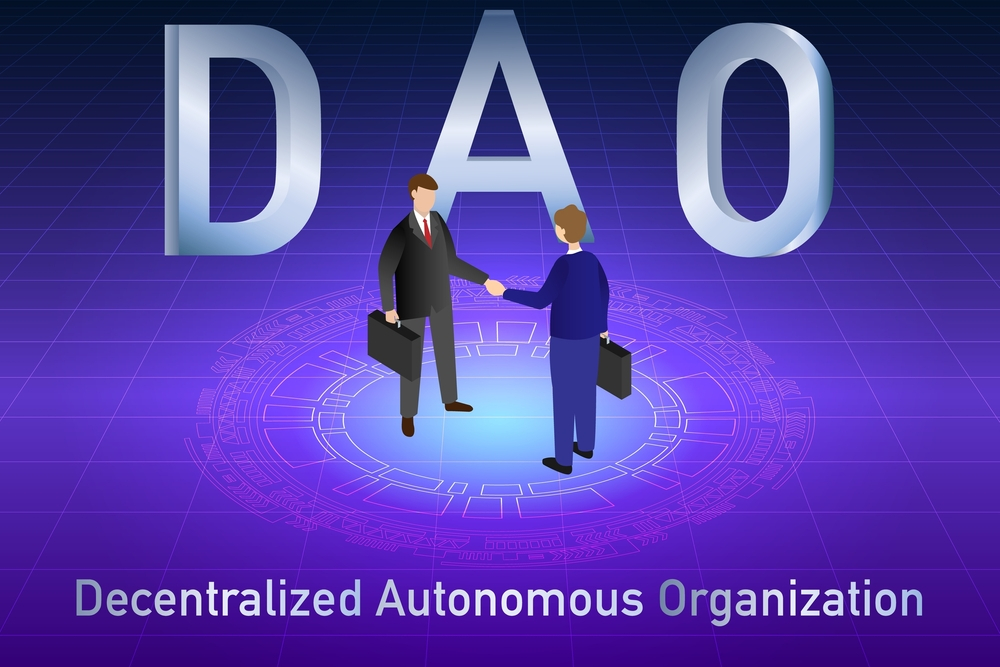Decentralization has become the new technology trend, and everyone is embracing it gradually.
Throughout history, our financial sector’s operation under centralization has shown many loopholes – lack of transparency and security.
Blockchain technology brings decentralization to the financial systems of the world at large.
Although understanding how blockchain works might be challenging, especially for beginners.
Therefore we made everything easier for our readers in this article.
What is Blockchain?

Blockchain is a distributed ledger that verifies and records transactions(data).
In the cryptocurrency space, blockchain records all buying/selling transactions safely, giving the public the freedom to check and participate in the whole process.
The definition might still seem unclear so let’s have a little illustration below.
The Layman view of Blockchain
In case you still don’t understand blockchain, this will give you a clearer picture of what a blockchain is.
Let’s assume you are a sales boy/girl. Whenever someone buys or sells something, you have to record it in a given “book.”
After you purchase any item, you will record every transaction in that “book.”
That “book” becomes the blockchain, as every transaction executed must be recorded there.
The “book” comprises different information(blocks) that are linked together to form the “blockchain.”
I hope this becomes clearer now. Let’s forge ahead!
History of Blockchain

Blockchain technology has been talked about since 1991 – by Stuart Haber and W Scott Stornetta but was first implemented by a pseudonymous person or group of persons called “Satoshi Nakamoto.”
Satoshi Nakamoto implemented the first blockchain by creating Bitcoin, the first cryptocurrency – an alternative payment system that could be sent “peer to peer” without the effect of intermediaries(banks).
Advantages of Blockchain Technology
Blockchain guarantees the protection and validity of data – this makes it useful not only in the crypto or financial sectors.
The following are the advantages of blockchain technology;
- Increased transparency.
- It provides greater security of information(data).
- Improved production.
- Decrease in production cost.
- Innovation and tokenization.
- Better life span of records.
- Deployment of Smart contracts(Layer1 blockchains).
To understand blockchain more, we need to know the real-world problems solved by this technology.
Let’s see some real-life applications of blockchain technology.
Real-Life applications of blockchain technology
Fully transparent voting mechanism
As the information or records in a blockchain cannot be edited or tampered with,
blockchain technology can now solve our current voting system problems – rigged elections and corruption.
A vote is valued data, so it needs to be immutable to guarantee a transparent voting system.
With blockchain technology, a voting application will allow voters to vote securely without fear of rigging. Even vote counters can comfortably count the votes knowing that only one ID can vote, and tampering with them is impossible.
With blockchain, users can also verify to make sure their votes count.
Better record and transfer of real estate ownership
As blockchain technology is gaining prevalence, it can aid the real estate sector.
The traditional way of land transfer ownership can be stressful and fraudulent.
Blockchain provides a secure and decentralized way to record and transfer ownership- of data.
Buying and selling of lands can be easier, faster, verifiable, and transparent.
As a real estate buyer, you can easily track previous properties and their ownership. As a real estate seller, you can feel safe and secure during the sale process. Finally, blockchain technology removes the stressful paper works in the real estate industry.
Healthcare systems
The record-keeping strategies of the healthcare sector have a lot of lapses.
Apart from the fact that blockchain technology will preserve medical records and data, it will also improve the supply chain of drugs.
Supply chain management
With blockchain technology, you can account for the production and supply of any product. It also makes production efficient by reducing wastage.
NFT marketplace
Nonfungible tokens give value and ownership to items. Without blockchain technology, these items are valueless and vulnerable to thieves.
Intellectual property protection
Whatever you post online about yourself is your intellectual property. These properties are stolen and utilized by others without your consent.
With blockchain technology, you can protect these properties and get the desired value from them.
Now we understand the real problems tackled by blockchain technology, let’s discuss the classification of blockchain.
Classification of Blockchain
The classification of blockchain shows the basis of any blockchain type.
- Permissioned and
- Permissionless.
Permissioned blockchain
A permissioned blockchain is a closed blockchain type operated by a group of people.
It assures a high level of privacy and security.
In this network, validations of transactions are not open to everyone.
Advantages of a permissioned blockchain
- It has no central authority.
- Mainly used where privacy is a top priority.
- High scalability – increased nodes(computer network).
- It is flexible.
Disadvantages of a permissioned blockchain
- Not completely decentralized.
- It needs permission to function.
- Not good where transparency is a top priority.
- Private authorities can change the rules whenever they feel like it.
Permissionless blockchain

A permissionless blockchain is the exact opposite of a permissioned blockchain.
It is open source and fully decentralized – everyone can participate in the network process(by validating transactions).
A permissionless blockchain is also called a trustless or public blockchain, so it favors where transparency is a top priority.
Advantages of permissionless blockchain
- Everyone can participate without permission.
- Guarantees trust in the system.
- It is fully decentralized.
- It is transparent, as anyone can view or verify information in the network.
Disadvantages of permissionless blockchain
- Energy consumption due to increased users.
- Lesser scalability – many users with few nodes causing validation delays.
- Lesser privacy, as everything is open and can be tracked easily.
Types of blockchain
Currently, we have four types of blockchains:
- Public Blockchain.
- Private Blockchain.
- Hybrid Blockchain.
- Consortium Blockchain.
Public Blockchain
This type of blockchain is open to the public and fully decentralized.
With a computer and internet connection, anyone can access and participate in the network.
Advantages of Public Blockchain
- It is trusted as there are protocols to detect fraud, so participants are confident regardless of other nodes.
- Increased security: The broader the network, the more data are distributed evenly- accounting for security.
- Unrevealing: Participating in the network doesn’t require your information.
- Decentralization: No central authority makes the decision, instead everyone contributes to it.
Disadvantages of Public Blockchain
- Scalability: The larger database of this network makes validation to be slow.
- High energy consumption: To get the network running especially for Proof of work blockchains, you need high energy-consuming machines to participate.
- Adoption: Governments are finding it hard to embrace this technology since it cannot be controlled – the effect of decentralization.
Real-life applications of public blockchains
Public Blockchains are currently used as an alternative to the traditional financial systems of the world. Bitcoin and Ethereum are now used for peer-to-peer transactions, displacing fiat currencies.
Private Blockchain
A private blockchain is not open source, thus it is not decentralized. Only selected (private) users can participate in the process, making it more private than the public network.
Advantages of Private Blockchain
- High blockchain speed: The rate of the transaction processing is very high due to its small database and users.
- Scalability: This blockchain is scalable as the size of the network can be decided manually.
- Privacy is a top priority: Since this network is not public, it guarantees a high privacy level, and it is always used for confidential purposes.
- A better overall performance: The nature of this blockchain is based on flexibility, so the overall performance is improved.
Disadvantages of Private Blockchain
- Less secured- The number of computer networks(nodes) is limited, so it can be manipulated – making it more vulnerable.
- Not decentralized- This blockchain is centralized so it is hardly trusted by participants. The central forces can use it in their favor.
- Prone to danger and failure- To keep the blockchain active, nodes must be online. Once a node goes offline, the entire network can be compromised.
Real-life applications of private blockchains
Companies like Hyperledger and Corda use private blockchains. You can use it to operate your organization without exposing values to the public.
Hybrid Blockchain
Just like the name, it is a mixture of both public and private network mechanisms.
Some part of the network is controlled by the organization while some are controlled by the public.
Advantages of Hybrid blockchain
- Optimal performance: The combination of the two blockchain types make the operation balanced and active. It is also hard to compromise as users have little control over it.
- Flexible: It can be customized without compromising security, integrity, and transparency.
- Reduced cost of operation: Few nodes are in operation, therefore computational cost is drastically reduced.
- Easy controlled mechanism: The blockchain type allows the developer to choose which transaction can be made public or not.
Disadvantages of Hybrid Blockchain
- It can be difficult to run: Not everyone is proficient enough to implement a hybrid Blockchain. The organization faces difficulty during downtimes.
- Transparency: Transparency is not fully given, since the organization can still hide information from the public.
- No reward system: Network participants are not given incentives, unlike the public blockchain.
Real-life applications of hybrid blockchain
This blockchain type will suit the healthcare industry, government sectors, real estate, and financial sectors.
Companies like Ripple network and XRP token are hybrid blockchains.
Consortium Blockchain
This blockchain is also called a federated blockchain.
It is organization-based and the blockchain doesn’t only validate the transaction it also executes.
It also has its part as that of a hybrid but more than one organization can operate on it.
Advantages of Consortium Blockchain
- Fastness: The limited number of users accounts for an increase in transaction speed.
- Multiple governances: Different organizations can take part in the governance processes. Therefore, it is decentralized to some extent.
- Privacy: The information in the blockchain is not shown to the public but members of the organizations can access it.
- Flexibility: The governance mechanism makes it customizable and flexible.
Disadvantages of Consortium Blockchain
- Joint Approval: All the members are to approve the protocol making it less flexible and there might be a conflict of interest.
- Transparency: It can be compromised if the organization wants it that way. It can also be hacked.
Real-life applications of Consortium Blockchain
Institutions like banks, and other payment body can utilize this blockchain type.
Companies like Tendermint and Multichain use consortium Blockchain.
Conclusion
As a technology, blockchain is a force to reckon with.
The utilities of this technology broadens its prevalence currently and in the near future.
